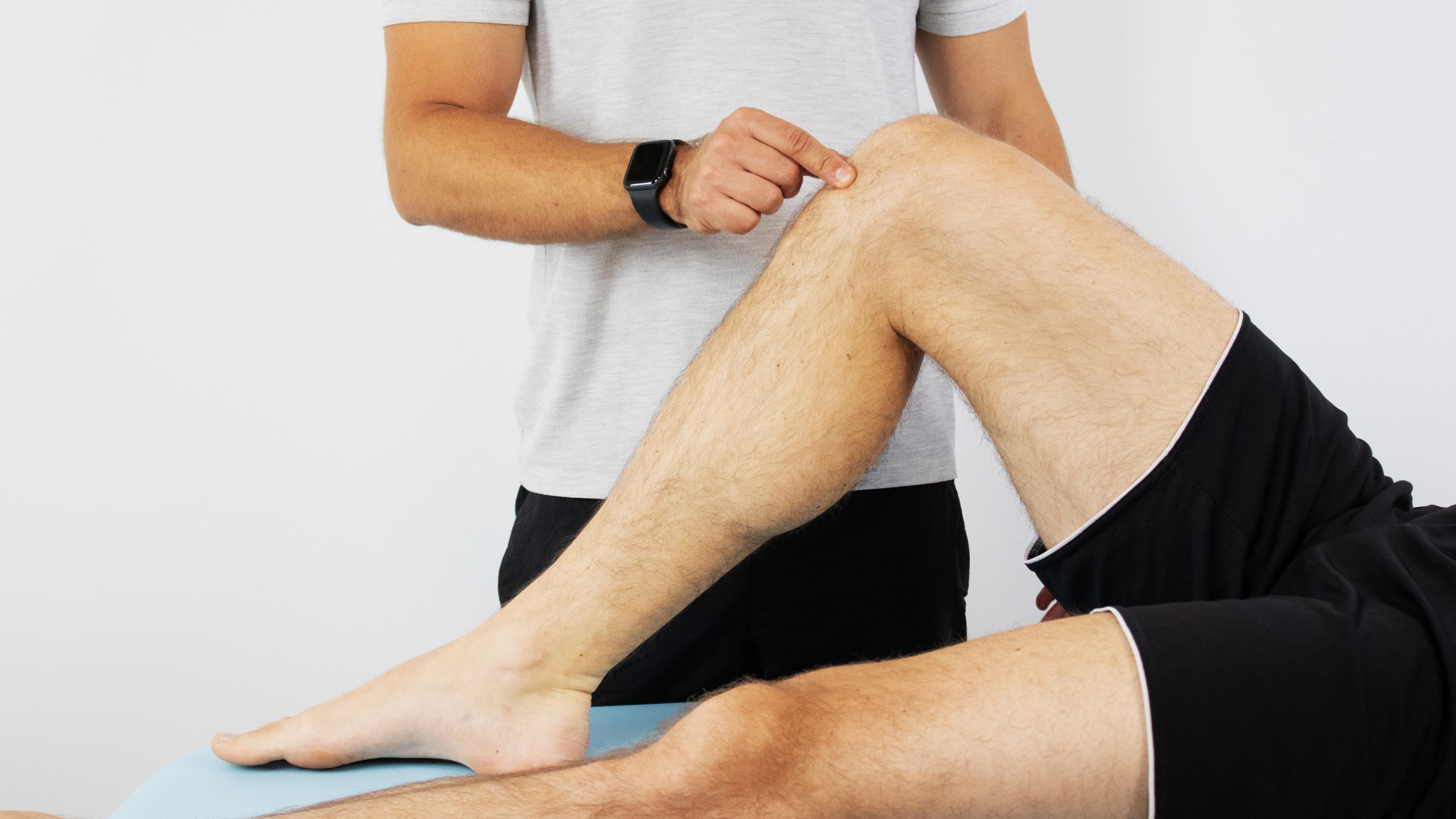Home>Health & Nutrition>Injury Prevention>Signs That Indicate You Need To Take A Break From Running Due To Pain


Injury Prevention
Signs That Indicate You Need To Take A Break From Running Due To Pain
Published: February 20, 2024
Discover the signs that indicate you need to take a break from running due to pain and learn injury prevention tips to keep you on track.
(Many of the links in this article redirect to a specific reviewed product. Your purchase of these products through affiliate links helps to generate commission for Therunningadvisor.com, at no extra cost. Learn more)
Table of Contents
Common Running Injuries
Running is an excellent form of exercise, but it can also lead to various injuries if not approached with caution. Understanding the common running injuries can help you take proactive measures to prevent them and ensure a safe and enjoyable running experience.
-
Runner's Knee: Also known as patellofemoral pain syndrome, this condition causes pain around the kneecap. It often results from overuse, muscle imbalances, or improper running techniques.
-
Shin Splints: This injury manifests as pain along the inner edge of the shinbone. It is commonly caused by overpronation, weak stabilizing muscles, or sudden changes in training intensity.
-
Achilles Tendinitis: Characterized by pain and stiffness in the Achilles tendon, this injury is often linked to overtraining, inadequate footwear, or tight calf muscles.
-
Plantar Fasciitis: This condition involves inflammation of the plantar fascia, leading to heel pain. It is often associated with excessive running, improper footwear, or tight calf muscles.
-
Stress Fractures: These are small cracks in the bone, typically occurring in the weight-bearing bones of the lower extremities due to repetitive stress and overuse.
-
IT Band Syndrome: The iliotibial (IT) band runs along the outside of the thigh and can become inflamed from the repetitive motion of running, causing pain on the outer knee or hip.
Understanding these common running injuries empowers runners to recognize the early signs and take necessary precautions to prevent them. It's essential to listen to your body and address any discomfort promptly to avoid exacerbating the injuries.
Recognizing Pain Signals
Pain is your body's way of communicating that something isn't quite right. When it comes to running, it's crucial to pay attention to the signals your body sends, especially when it comes to pain. Ignoring these signals can lead to more severe injuries and prolonged recovery times. Here are some pain signals to watch out for:
1. Persistent Discomfort
Feeling discomfort during or after a run is not uncommon, especially when pushing your limits. However, if the discomfort persists and doesn't subside with rest, it could indicate an underlying issue. Persistent discomfort, such as a lingering ache in a specific area, should not be overlooked.
2. Sharp or Stabbing Pain
Sharp or stabbing pain during a run is a clear indication that something is wrong. This type of pain is often associated with acute injuries, such as muscle strains or ligament sprains. Ignoring sharp pain and continuing to run can exacerbate the injury, leading to a longer recovery period.
3. Swelling and Inflammation
Swelling and inflammation around a joint or muscle after a run can be a sign of overuse or an underlying injury. It's essential to address swelling promptly to prevent further damage and promote healing.
4. Altered Gait
If you notice changes in your running gait, such as limping or favoring one side, it could be a sign of an injury. Compensating for pain by altering your gait can lead to additional stress on other muscles and joints, potentially causing secondary injuries.
5. Decreased Range of Motion
A noticeable decrease in your range of motion, particularly in a specific joint, could indicate a developing injury. Stiffness and difficulty moving a joint through its full range of motion may signal the need for rest and recovery.
6. Persistent Fatigue
Feeling excessively fatigued during or after runs, despite adequate rest and recovery, may indicate that your body is struggling to cope with the physical demands. This could be a sign of overtraining or an underlying issue that requires attention.
Recognizing these pain signals and taking appropriate action is crucial for injury prevention and overall well-being. If you experience any of these pain signals, it's essential to listen to your body and prioritize rest and recovery. Ignoring these signals can lead to more severe injuries, potentially sidelining you from running for an extended period.
Importance of Rest and Recovery
Rest and recovery are integral components of a runner's training regimen, playing a pivotal role in injury prevention and overall performance. While the thrill of pushing physical limits and achieving new milestones is undeniable, it's equally crucial to recognize the significance of allowing the body to rest and recuperate. Here's why prioritizing rest and recovery is essential for every runner:
Read more: Treating Neck Pain From Running
1. Tissue Repair and Adaptation
When you run, especially at high intensities or long distances, your muscles, tendons, and ligaments undergo stress and micro-tears. Adequate rest allows these tissues to repair and adapt, becoming stronger and more resilient. Without sufficient recovery time, the risk of overuse injuries significantly increases, potentially hindering your running journey.
2. Prevention of Overtraining
Overtraining syndrome can manifest as persistent fatigue, decreased performance, and an increased susceptibility to injuries and illnesses. By incorporating rest days into your training schedule, you give your body the opportunity to recover from the physical demands of running, reducing the likelihood of overtraining and its detrimental effects.
3. Mental Rejuvenation
Rest and recovery extend beyond physical recuperation; they also play a crucial role in mental rejuvenation. Running can be mentally taxing, and continuous training without breaks can lead to burnout and a decline in motivation. Taking time off from running allows you to recharge mentally, maintaining a positive mindset and enthusiasm for your running endeavors.
4. Injury Prevention
One of the most compelling reasons to prioritize rest and recovery is injury prevention. Overuse injuries, such as stress fractures, tendonitis, and muscle strains, often stem from inadequate recovery periods. By allowing your body to rest, you mitigate the risk of these injuries, ensuring that you can continue running consistently and without setbacks.
5. Performance Enhancement
Contrary to common belief, rest and recovery are not hindrances to progress; rather, they are catalysts for performance enhancement. It is during periods of rest that your body adapts to the physiological stress of running, leading to improved strength, endurance, and overall performance when you return to training.
In essence, rest and recovery are not signs of weakness or a lack of dedication; they are fundamental pillars of a sustainable and successful running journey. By embracing the importance of rest and recovery, you can safeguard your physical and mental well-being, mitigate the risk of injuries, and elevate your overall running experience. So, remember, the next time you lace up your running shoes, do so with the understanding that adequate rest and recovery are just as crucial as the miles you log.
Signs of Overtraining
Overtraining is a common pitfall that many runners encounter, often unknowingly pushing their bodies beyond the threshold of optimal training. Recognizing the signs of overtraining is crucial for mitigating its detrimental effects and preserving both physical and mental well-being. Here are the key indicators that may signal you are overtraining:
-
Persistent Fatigue: Experiencing persistent fatigue that doesn't dissipate with rest is a hallmark sign of overtraining. Despite adequate sleep and recovery, feeling constantly drained and lacking energy can indicate that your body is struggling to cope with the physical demands of training.
-
Decreased Performance: A noticeable decline in performance, such as slower running times or decreased strength and endurance, can be a red flag for overtraining. When your body is pushed beyond its limits without sufficient recovery, it can impede progress and lead to stagnation or regression in performance.
-
Increased Resting Heart Rate: Monitoring your resting heart rate can provide valuable insights into your body's recovery status. A consistently elevated resting heart rate, especially in the absence of other influencing factors such as illness or dehydration, may indicate that your body is under excessive stress from overtraining.
-
Persistent Muscle Soreness: While muscle soreness after intense workouts is normal, persistent and lingering muscle soreness can be indicative of overtraining. When the body is unable to adequately recover between training sessions, it can result in prolonged muscle soreness and discomfort.
-
Mental and Emotional Exhaustion: Overtraining doesn't solely manifest as physical fatigue; it can also take a toll on your mental and emotional well-being. Feeling irritable, anxious, or experiencing a lack of motivation towards running are common signs of overtraining-induced mental and emotional exhaustion.
-
Insomnia and Disrupted Sleep Patterns: Overtraining can disrupt your sleep patterns, leading to insomnia or restless sleep. If you find it challenging to fall asleep or experience frequent awakenings during the night, it may be a result of the physiological and psychological stress induced by overtraining.
-
Increased Susceptibility to Illness: Overtraining can compromise the immune system, making you more susceptible to illnesses such as colds and flu. If you find yourself falling ill more frequently without any other apparent cause, it could be a sign that your body is struggling to cope with the demands of training.
Recognizing these signs of overtraining is pivotal for implementing corrective measures and preventing the escalation of physical and mental strain. It's essential to listen to your body, prioritize adequate rest and recovery, and adjust your training regimen to strike a balance between challenging workouts and essential recuperation. By doing so, you can safeguard your well-being and sustain a fulfilling and sustainable running journey.
When to Seek Professional Help
Seeking professional help is paramount when persistent pain or discomfort disrupts your running routine despite adequate rest and self-care measures. While minor aches and pains are common in running, certain symptoms warrant the attention of a healthcare professional specializing in sports medicine or orthopedics. Here are the indicators that signify the need to seek professional assistance:
1. Persistent or Worsening Pain
If you experience persistent or worsening pain that does not improve with rest, ice, or over-the-counter pain medications, it's crucial to consult a healthcare professional. Ignoring persistent pain can exacerbate the underlying issue, potentially leading to more severe injuries and prolonged recovery periods.
Read more: Running And Bunions: What You Need To Know
2. Inability to Bear Weight
In cases where pain prevents you from bearing weight on a specific limb or significantly hinders your mobility, seeking professional evaluation is imperative. Difficulty bearing weight on a limb could indicate a significant musculoskeletal injury that requires expert assessment and treatment.
3. Limited Range of Motion
A noticeable decrease in the range of motion in a joint, accompanied by pain or stiffness, warrants professional evaluation. Limited range of motion can signify underlying joint or soft tissue issues that necessitate the expertise of a healthcare professional to diagnose and address effectively.
4. Swelling and Inflammation
Persistent swelling and inflammation around a joint or muscle, especially if it persists despite rest and elevation, should prompt a visit to a healthcare provider. Swelling can indicate various conditions, including ligament sprains, tendon injuries, or inflammation, requiring accurate diagnosis and targeted treatment.
5. Recurring Injuries
If you experience recurring injuries in the same area or notice a pattern of frequent overuse injuries, seeking professional help is essential. Recurring injuries may signal underlying biomechanical issues, gait abnormalities, or training errors that necessitate expert assessment and intervention to prevent further setbacks.
Read more: All You Need To Know About Strava Summit
6. Altered Running Mechanics
Significant changes in your running mechanics, such as a noticeable limp, asymmetrical gait, or persistent discomfort during running, should prompt a consultation with a healthcare professional. Addressing altered running mechanics early can prevent compensatory injuries and facilitate a safe return to running.
7. Prolonged Recovery
If you find that your recovery from minor running-related discomfort is prolonged, or you struggle to resume your regular training routine despite adequate rest, seeking professional guidance is crucial. Prolonged recovery may indicate an underlying issue that requires expert evaluation and targeted rehabilitation.
In summary, recognizing the signs that warrant professional help is pivotal for safeguarding your long-term running journey. By seeking timely assistance from qualified healthcare professionals, you can receive accurate diagnoses, personalized treatment plans, and expert guidance to address underlying issues effectively, facilitating a safe and sustainable return to running. Remember, your well-being and running longevity are worth the proactive pursuit of professional assistance when needed.











